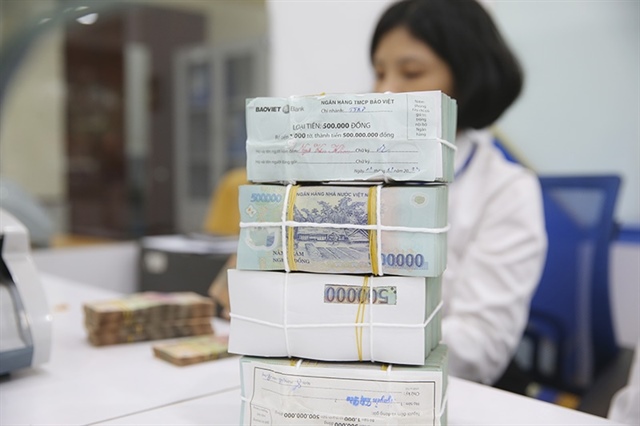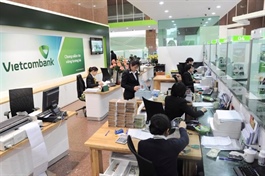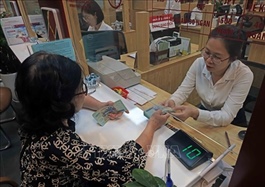Banks optimise credit plans to boost efficiency
Banks optimise credit plans to boost efficiency
Military Commercial Joint Stock Bank (MB) is aiming to increase its outstanding credit volume and capital mobilisation by more than 25 per cent to surpass $40 billion by the end of this year. The bank is also targeting a maximum bad debt ratio of 1.7 per cent along with a bad debt coverage ratio of over 100 per cent
According to Pham Nhu Anh, CEO of MB, the bank will allocate at least half of its credit growth limit to retail customers and small and medium-sized enterprises (SMEs), while the remaining portion will focus on large-scale businesses.
"As MB is also striving to increase market share, we are fostering digital transformation as digital channels are expected to contribute approximately 40 per cent of total revenue," said Anh.

Photo: baodautu.vn |
Meanwhile, Phung Thi Binh, deputy general director of Agribank, stated that the bank is projected to achieve 13 per cent credit growth in 2025.
“Agribank’s credit scale surpassed $68 billion last year, meaning we could inject $9.2 billion into the economy in 2025. We are confident that the banking sector’s credit growth will be more favourable this year compared to the previous year,” said Binh.
Agribank has launched four preferential loan schemes so far this year, tailored to export-import businesses, foreign-invested enterprises, key clients, and SMEs. Additionally, the bank has allocated a $4.4 billion preferential credit package for individual customers.
Given the improving credit outlook and increased capital absorption capacity of the economy, state lender Bank for Investment and Development of Vietnam (BIDV) has set a credit growth target of 14 per cent. BIDV hopes this will ensure capital mobilisation aligns with usage, maintain liquidity, and keep the bad debt ratio below 1.4 per cent.
The State Bank of Vietnam (SBV) has issued directives to stabilise deposit rates and strive to lower lending rates since last November. The SBV requires credit institutions to maintain stable and reasonable deposit rates in line with their capital balance capabilities, healthy credit expansion, and risk management capacities. These measures aim to stabilise the monetary market and overall interest rate levels.
According to updated data from the SBV, lending interest rates have continued to decline, decreasing by approximately 0.96 percentage points per year compared to the end of 2023. Experts from Vietcombank Securities noted that this is the lowest lending rate level in years, currently ranging from 5-7 per cent, per year.
Tran Thi Khanh Hien, head of Research at MB Securities, highlighted that key themes shaping the banking sector in 2025 include credit growth, net interest margin (NIM), and asset quality.
"With an economic growth target of 8 per cent, credit is expected to grow by 16-17 per cent, but differentiation among banks has become evident, as seen in the first nine months of 2024. The banking sector's overall NIM is trending downward, averaging around 4.5 per cent, though still higher than some regional markets," Hien said.
According to Hien, deposit interest rates are stabilising, while lending rates are expected to further decline. As a result, banks that can effectively manage the balance between funding sources and lending will have higher profitability potential.
At the regular government press conference on February 5, SBV Deputy Governor Dao Minh Tu declared banks will set their own credit growth limits this year while ensuring operational safety. This marks a shift from previous years, when the SBV did not impose rigid credit growth targets for individual banks.
"The SBV will closely monitor credit flow into high-risk sectors while facilitating capital allocation for production and social housing," said Tu.

























